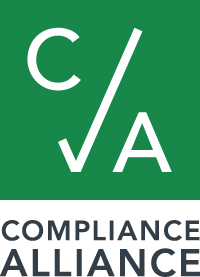|
Question:
We have a new teller machine that we are about to make available for use. It is a virtual teller machine (VTM) where customers will be able to access a teller via video chat. The debit card would only be used for identification purposes, if at all. Sometimes, they can just verify their identity through the video chat, though. Do the Reg. E error procedure rules apply? Answer: Not necessarily – no. For the rules to apply, there would need to be an electronic fund transfer (EFT). In order for there to be an EFT, in the situation of a VTM, there would need to be an electronic terminal, telephone, computer, or magnetic tape. Although, this is not a totally settled point in the law, it is our interpretation that a VTM would not fall under the definition of “electronic terminal” nor “computer” for purposes of Reg. E. Further, the official commentary to Reg. E expressly excludes teller operated machines where an access device is used for ID purposes only as an “EFT.” So, there would be no EFT in this situation of a VTM. Thus, because the error resolution procedures of Reg. E (§ 1005.11) apply to EFTs, the rules encapsulated in § 1005.11 do not apply. 12 CFR § 1005.11(a)(1): “(a) Definition of error. (1) TYPES OF TRANSFERS OR INQUIRIES COVERED. (i) An unauthorized electronic fund transfer; (ii) An incorrect electronic fund transfer to or from the consumer's account; (iii) The omission of an electronic fund transfer from a periodic statement; (iv) A computational or bookkeeping error made by the financial institution relating to an electronic fund transfer; (v) The consumer's receipt of an incorrect amount of money from an electronic terminal; (vi) An electronic fund transfer not identified in accordance with § 1005.9 or § 1005.10(a); or (vii) The consumer's request for documentation required by § 1005.9 or § 1005.10(a) or for additional information or clarification concerning an electronic fund transfer, including a request the consumer makes to determine whether an error exists under paragraphs (a)(1)(i) through (vi) of this section.” https://www.consumerfinance.gov/eregulations/1005-11/2016-24506#1005-11-a 12 CFR § 1005.3(b)(1): “(1) DEFINITION. The term “electronic fund transfer” means any transfer of funds that is initiated through an electronic terminal, telephone, computer, or magnetic tape for the purpose of ordering, instructing, or authorizing a financial institution to debit or credit a consumer's account. The term includes, but is not limited to: …” https://www.consumerfinance.gov/eregulations/1005-3/2016-24506#1005-3-b 12 CFR § 1005.2(h)-3: “A terminal or other computer equipment operated by an employee of a financial institution is not an electronic terminal for purposes of the regulation. However, transfers initiated at such terminals by means of a consumer's access device (using the consumer's PIN, for example) are EFTs and are subject to other requirements of the regulation. If an access device is used only for identification purposes or for determining the account balance, the transfers are not EFTs for purposes of the regulation.” https://www.consumerfinance.gov/eregulations/1005-Subpart-A-Interp/2016-24506#1005-2-h-Interp-1 Comments are closed.
|
Archives
March 2020
CategoriesCompliance Alliance offers a comprehensive suite of compliance management solutions.
To learn how to put them to work for your bank, call (888) 353-3933 or email info@compliancealliance.com. |


 RSS Feed
RSS Feed
